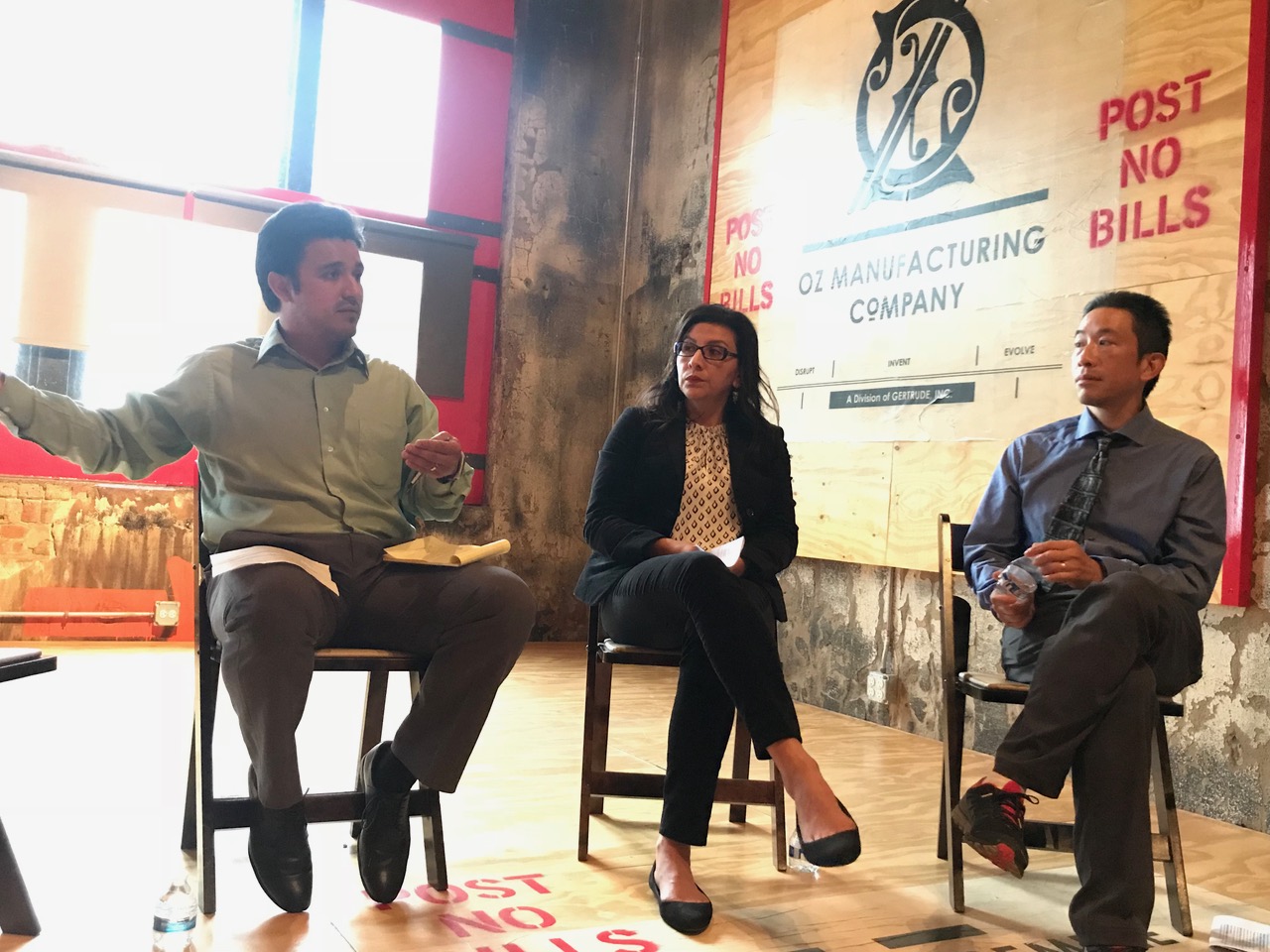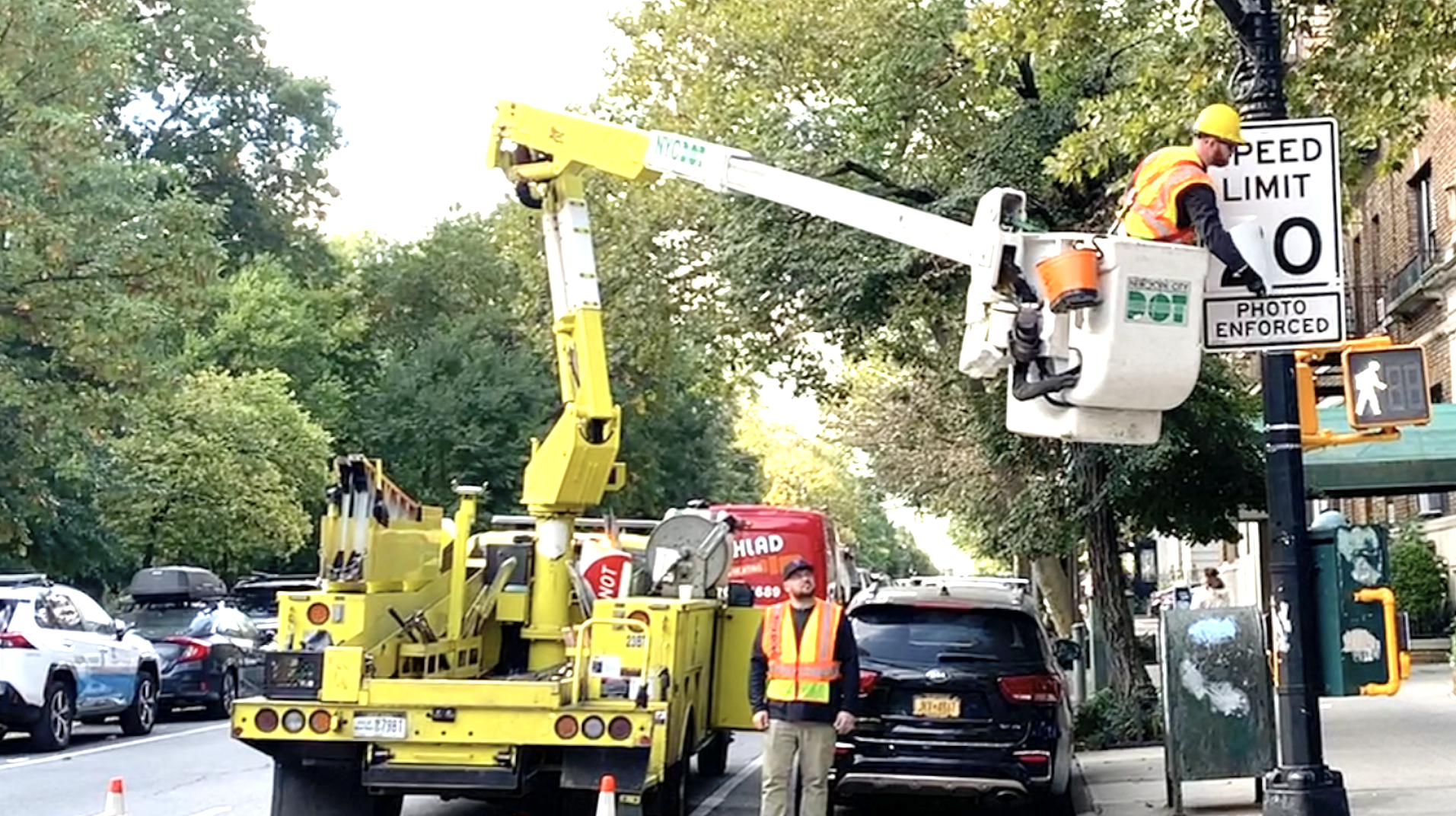Ever since Mayor Rahm Emanuel’s announcement in early 2016 of plans to build the Paseo trail connecting Pilsen and Little Village along 4 miles of disused rail corridor, there has been endless speculation about the construction timeline and potential impacts on housing affordability, particularly in gentrifying Pilsen. The proposed multi-purpose Paseo would start at 16th Street and Sangamon Street, reach Cermak Road and follow Blue Island Avenue and 26th southwest to Central Park Avenue.
Concerns about the Paseo have partly been fueled by comparisons to the Bloomingdale Trail, aka The 606, the 2.7-mile elevated trail running through Humboldt Park, Logan Square, Wicker Park, and Bucktown. Three year's after the trail's groundbreaking in late 2013, housing prices near the Bloomingdale west of Western Avenue had increased by 48.2 percent, according to data released by the Institute of Housing Studies at DePaul University in late 2016.
To discuss some of the concerns and questions about the trail, the American Planning Association's Illinois chapter organized “Bike-Ped Trails and Affordability: El Paseo Panel and Garden Tour.”
The panel included Nelson Chueng, coordinating planner at the Chicago Department of Planning and Development, Veronica Gonzalez, vice president of real estate development at The Resurrection Project, and Byron Sigcho Lopez, director of the Pilsen Alliance (currently on leave while he runs for 25th Ward alderman.) Dr. John-Jairo Betancur, a professor at UIC’s College of Urban Planning and Public Affairs, moderated the discussion.
Betancur kicked off the discussion. “There is a perception that the idea of the Paseo came from City Hall. How did the planning involve the community and other stakeholders? If there was no involvement, how do we improve?”
Chueng compared the Bloomingdale to the Paseo and said he sees the latter being “much more community-driven.” One issue he brought up is that the corridor for the Paseo is still owned by BNSF Railway. “We have to be the ones that get it first,” he said.

Gonzalez recalled first hearing about the Paseo in the Little Village Quality of Life Plan in 2005. “This was about the lack of green space and the need to reclaim any plot of land and convert it to active parks,” she said. “These conversations were happening 12 years ago.”
One of the key differences Gonzalez sees between the Bloomingdale and the Paseo is that the former had an active grassroots organization backing it and pushing for its design, acquisition, and implementation, Friends of the Bloomingdale Trail. “The Paseo doesn’t have that,” she said. “You have actors reacting to what seems to be a disconcerted effort. There’s no central place driving it.”
Sigcho Lopez stressed that there needs to be a plan to avoid potential housing displacement along the trail, which he says is a main concern of residents he’s interacted with. “We need to have a plan to create safety nets. Amenities have externalities,” he said. “When a project is coming from the community, you will have the community backing it.” Sigcho Lopez added that he's not opposed to the project, but rather that he wants to ensure that there is a transparent planning process, with residents' concerns addressed in the plans.
Chueng agreed that community conversations need to happen to prepare for the Paseo. “El Paseo right now is just a rail track, but there’s no [detailed] plan. Having a dialogue right now is important.”
Gonzalez also emphasized the need to consider the environmental factors around the Paseo and potential impacts.“If we are going to do this, what are the mitigating impacts? What are the impacts of it being around industry?" she asked, particularly referring to the proximity of the Little Village stretch of the Paseo to the neighborhood's industrial corridor.
Betancur posed another question about whose interests the Paseo will serve. “The 606, which started as an idea of an asset, became a very expensive amenity for tourists," he argued. "I want to hear each of you discuss how a project like the Paseo, even the idea of a project like this, can affect a community teetering on the edge of gentrification when there are more pressing concerns,” he said. “At the end of the day, even [proposing] the Paseo, isn’t that encouraging gentrification?”
Gonzalez stated that she doesn't believe that green infrastructure by itself drives investment, and emphasized that the Bloomingdale was built in an already-gentrifying neighborhood. She argued that families in Little Village and Pilsen deserve nice places to walk and bike. She added that the Paseo can be an opportunity to fortify the communities' Mexican identities. “The name for the Paseo is taken from El Paseo de la Reforma, a street in Mexico City running through both rich and poor areas,” she said. “This is opportunity to reclaim and reshape.”
Sigcho Lopez agreed that it’s important to reclaim spaces, but asserted that these communities have more pressing concerns. “The first thing we have to do is talk about how we keep residents here, how we keep the Mexican families that are here,” he said. He offered solutions like property tax freezes and rent control, which he added are citywide issues. (Rent control would also require statewide legislation.)
Chueng said the concerns the concerns about the Paseo could ultimately be beneficial. “If the Paseo is a force to make us look at these serious housing issues, it’s a good thing.”
Gonzalez said one important step to have these conversations is to organize a campaign to spread the word about the Paseo. “We need to go to las lavanderías, Dunkin' Donuts, etc.,” she said. “We need to stop talking to each other as professionals and get out to speak to residents.”
When panelists were asked about the timeline of the Paseo construction, Chueng said it’s unclear. “When we first conceived of The 606, it took 11 years to actually do it,” he said “The Paseo is going to take time. Maybe time is good for us.”
![]()
Did you appreciate this post? Consider making a donation through our PublicGood site.



